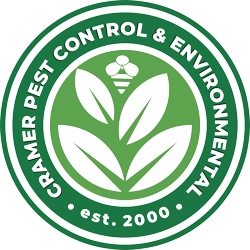10 Warning Signs of Mold in Your Home That You Should Look Out For
Mold is one of those things that mostly goes unnoticed. It likes to lurk in the dark recesses below sinks, or in damp corners of basements. In some cases mold growth happens entirely out of sight – literally beneath your floorboards or behind your walls.
The most troubling thing about mold though is that long-term exposure can lead to a litany of health problems. If you suspect you have a mold problem it is essential for your health and that of your family’s to work with a professional mold removal company. This article will look at ten warning signs that indicate you may have a severe mold problem developing in your home.
Musty Odors
The human nose was carefully evolved over millions of years to detect danger. Ranging from spoiled food to unsanitary latrines, bad smells signify that you need to be on your guard. The smell of mold is perhaps not the most unpleasant odor you’ve encountered in your life – often we associate it with the smell of our grandparents’ basement – but it is distinctive and should be taken as a serious warning.
If you have moved into a new home that perpetually smells musty, stale, or damp, even after being aired out, or the musty smell has recently developed in your home, you should have a professional inspect your home for mold.
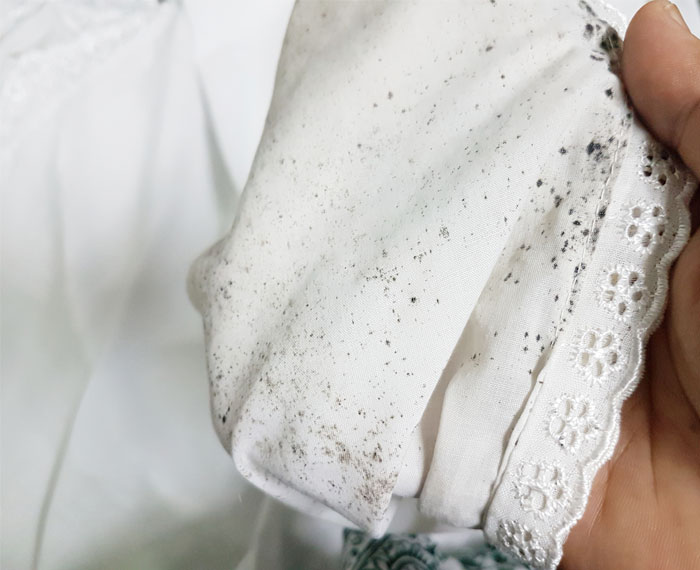
Spotted Clothing
Clothing is a common target for mold – particularly clothing that has been stored in your basement, garage, or attic. Mold spots on clothing can have a wide variety of appearances, ranging from small black spots to white or even orange speckles. Generally the texture will be slightly fuzzy – although that may be hard to discern depending on what sort of fabric it is growing on.
Avoid storing clothing while it is still damp as mold spores require humidity in order to germinate. Similarly, make sure you are storing your clothing in a dry, well ventilated area.
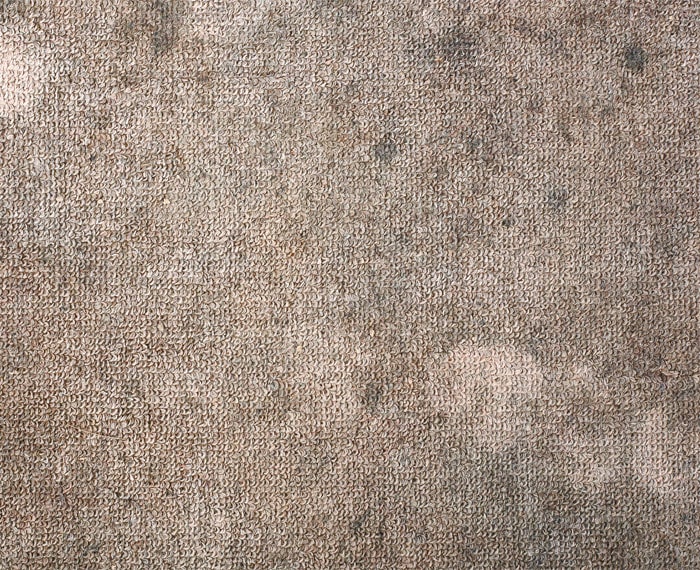
Contaminated Carpets
If your carpets have unexplained black spots or streaks, then you may be looking at a mold infestation! Carpets can easily fall victim to mold – particularly if they ever get wet enough to soak the underlying carpet pad. In some cases you might not even notice a leak under a carpet – particularly in basements.
Note: The CDC actually recommends against carpeting basements and bathrooms as it can be difficult to keep them dry enough to avoid mold growth.
It is very difficult to thoroughly clean moldy carpets and the best course of action is usually to fully remove them, fix the source of the leak, clean and disinfect the area, and install new carpets. Be aware that protective gear including respirators should be worn when removing moldy carpets.
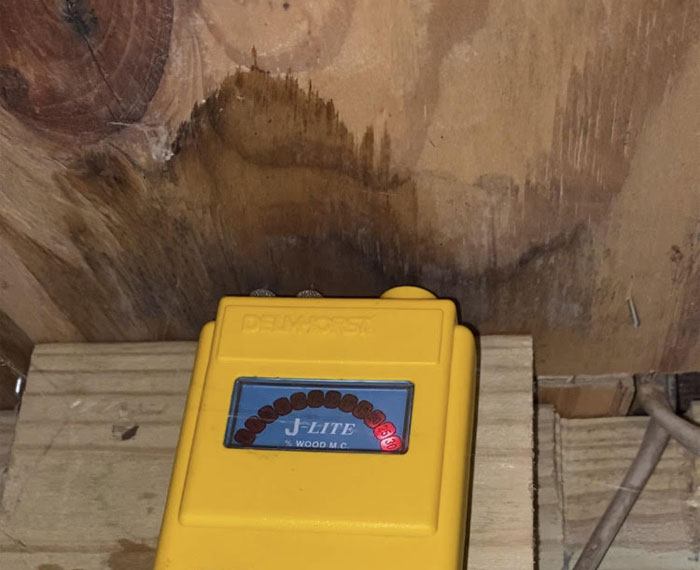
Water Leaks
Water leaks don’t mean that you have mold, but they are the leading cause of mold infestations!
As mentioned before, mold requires a moist environment in order to develop – and under normal conditions our homes should simply be too dry for mold. However, if you have a leaky toilet cistern, condensation pooling in your basement, or a leak which has been allowed to go unchecked, then you have created the perfect environment for mold.
Worsening Health Symptoms
If you or your family are experiencing new, unexplainable health problems, then you may want to consider mold as a possible culprit.
First, we must digress briefly and explain what we mean when we say ‘mold.’ Mold is not a single thing, but is instead a catchall term for thousands of different species of fungi. Some are helpful, like those that we use to create penicillin or bleu cheese. Others are unsightly, but largely benign except to those with mold allergies. And finally, there are a few species of toxic mold which produce mycotoxins that may cause a whole host of health problems.
Identifying exactly which mold you have is something of a futile gesture as the conditions that allow any species of mold to grow are going to allow all types of molds to grow. If you have any mold growing in your home you should take action immediately.
The most common symptoms of mold exposure include:
- Coughing
- Wheezing
- Itchy or watery eyes
- Hives
- Runny nose
- Sinus congestion
- Asthma
- Shortness of breath
Other health issues like lethargy, acute idiopathic hemorrhages, and memory loss have been associated with black mold exposure – but according to the CDC no link has ever been proven. Even though the health links to severe problems are unclear, mold is known to cause allergic reactions and can cause life threatening illness in individuals with compromised immune systems.
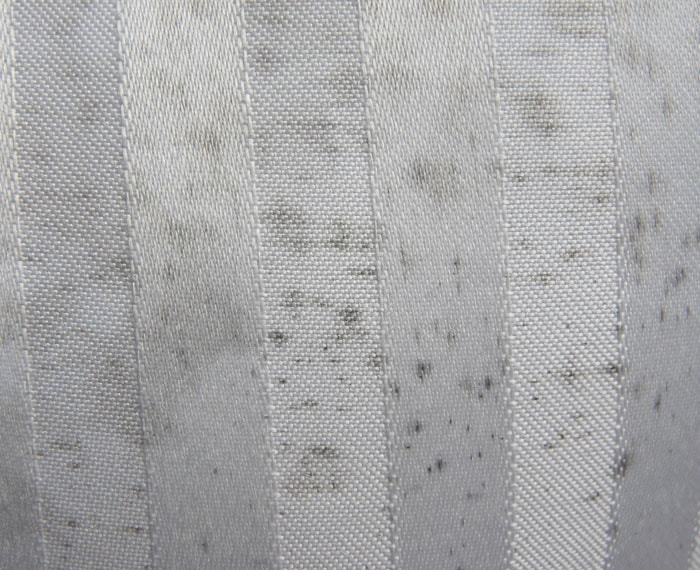
Discoloration on Furniture
Just as mold can grow on clothing, it is equally at home growing on furniture and upholstery. Mold on furniture usually resembles small black or white spots, similar to what you see growing on bread that has been left for too long.
Furniture is no exception to the rule of moisture – dry furniture will not grow mold! If you see mold growing on your furniture that means either there is a leak that went undetected or your indoor humidity is too high. It will be important to determine the source of moisture in order to prevent the mold from returning in the future.

Wall Problems
Large mold infestations are usually fairly obvious – but when they happen behind your walls the signs they present are a bit less clear. If your paint or wallpaper bubbles, cracks, or peels without explanation, then you might be looking at a mold problem.
Just like clothing and furniture, new and unexplained speckle patterns appearing on your walls is a sure sign that mold is growing.
If your drywall ever gets wet from a roof leak or flood you need to take steps to ensure it dries completely before mold can begin growing. Don’t just assume that it will dry on its own – even relatively minor flooding can cause serious mold problems to form.
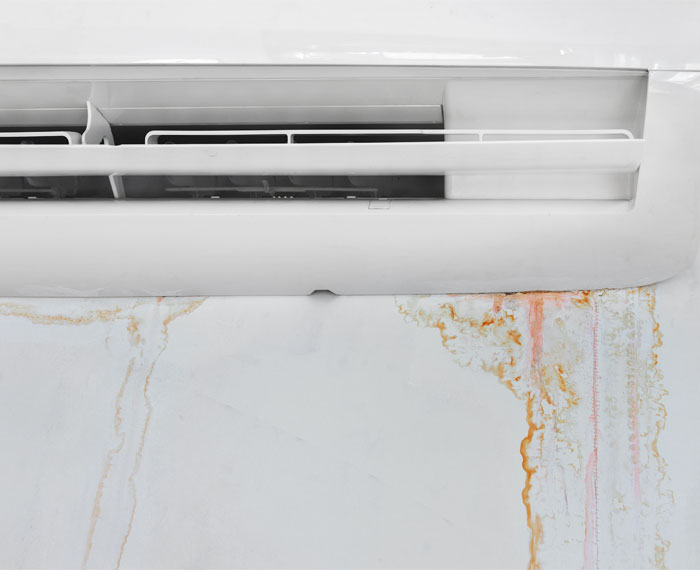
Weird Smells From Your Air Conditioner
Another common source of mold in the home is a malfunctioning air conditioning unit. Under normal operating conditions air conditioners create moisture in the form of condensation which is captured in a drain pan and allowed to flow harmlessly away. If the drain pan becomes clogged it may begin to overflow, creating perfect conditions for mold.
This problem is usually noticeable as a musty smell when you turn on your air conditioning. Don’t confuse this smell with the ‘burnt dust’ smell of turning on your heating unit for the first time during the winter season. Instead, this will be a damp, earthy smell that happens while your AC is running.
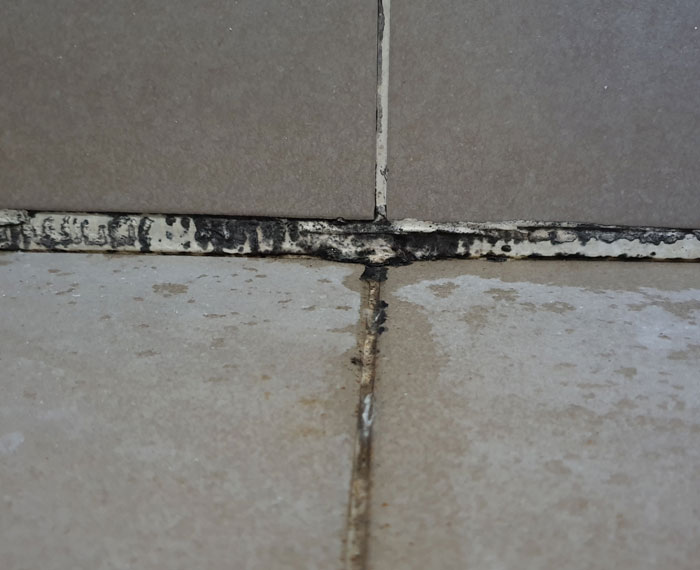
Dark Grout In Your Bathroom
Your bathroom grout is constantly exposed to moisture, making it a perfect home for mold. If your grout lines used to be white but have grown a dark patina over time, then you have mold.
Usually bathroom mold is self limiting and a bit of time spent with a stiff nylon bristle brush and a dilute bleach solution is all it takes to get rid of it. Be careful when using bleach indoors as it can cause chemical burns and its fumes can cause severe respiratory problems.
The CDC recommends using one cup of bleach diluted in one gallon of water, or 1 part bleach to 16 parts water. Never mix bleach with any other household cleaners as it can produce toxic gasses.
Past Water Damage or Signs of Moisture Issues
If your home has ever had severe water damage or moisture issues, then you may want to consider mold testing. In conditions of excess moisture, mold can begin growing in as little as 24 to 48 hours. This timetable is often far faster than enclosed indoor spaces will dry on their own – making the likelihood of mold after water exposure quite high.
Tips for Preventing Household Mold
Mold remediation is time consuming and expensive so mold prevention should be every homeowner’s goal. The good news is preventing mold growth is as simple as keeping your home dry. Indoor humidity levels should be kept between 30 and 50 percent relative humidity – at all times!
Even if you’re going to be out of town for a few weeks, it is essential that your home not be allowed to become too humid as you may return from vacation to a house full of mold!
Other ways to prevent mold is ensure that your home has good airflow, prevent and clean up leaks as quickly as possible, and use a dehumidifier in basements if necessary.
If your home ever experiences major flooding it is important to work with a water removal company to get your home dried out. You have a very short window to eliminate moisture before mold will begin to grow – at which point your problems will go from bad to worse.
What To Do When You Suspect Mold
Whether you just suspect mold or are entirely certain that you’ve got an unwelcome fungal buildup taking over your basement, mold removal is a job best undertaken by professionals. Between the dangers posed by the mold spores themselves to the powerful chemicals necessary to eliminate them, the most reliable solution is to work with a mold removal specialist.
If you have spotted any of these ten signs of indoor mold, then you should contact your local mold remediation company. They will be able to carefully sanitize the area and make your home safe again.
